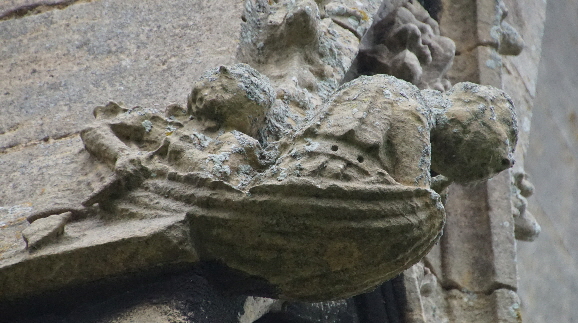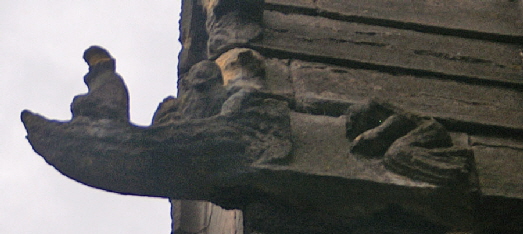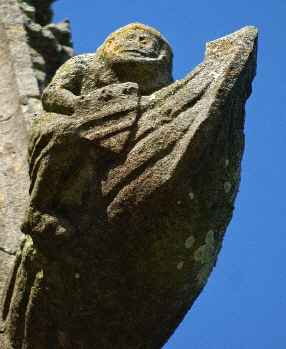|
|
||||||||||||||||||||||||||||||||||||||||||||||||||||||||||
|
Please sign my Guestbook and leave feedback |
||||||||||||||||||||||||||||||||||||||||||||||||||||||||||
|
Recent Additions |
||||||||||||||||||||||||||||||||||||||||||||||||||||||||||
|
So far we have nailed the remarkably prolific John Oakham to thirteen churches. Eight of them have sported his flea trademark that I believe denoted his partnership with Simon Cottesmore. When I wrote the first edition of this account I had no idea that John worked outside the MMG area other than at Brant Broughton and Muston. Harlaxton, Denton, Swineshead and Boston were all unknown to me. I had, however, found extensive frieze carvings at Heckington, Sleaford and Ewerby, all of great interest in terms of quality and content and clustered together in South Lincolnshire well away from the MMG area. I felt sure there must be another mason at work there; someone unknown to the MMG and indeed I resolved to look into that “when I got round to it”. Not long after I wrote that book I found John Oakham at Exton Church which was, frankly annoying because that is firmly within the MMG geographical area, close to Oakham. Then I found John at Boston and Swineshead. Harlaxton and Denton followed and it had dawned on me that John Oakham had wandered well outside the MMG. You can probably guess what is coming next. Looking with fresh eyes at Sleaford, Heckington and Ewerby I needed to address whether was a case to be answered for John Oakham;s involvement. I started to investigate churches along the A17 between Brant Broughton and Boston with a more open mind. None of these churches were so kind as to sport a flea carving and there were no more long friezes of the cow-lion heads. I had to look for more subtle signs and sure enough, they were often there. But they were not definitive. This chapter focuses then on where else John may have got to and what the evidence is. Let’s start on the geography because it is important. The MMG was largely clustered around Oakham within a triangle of Ryhall (Rutland) in the East, Hungarton (Leicestershire) in the west and Buckminster (Lincolnshire) in the north. For the benefit of this edition (I had not discovered Harlaxton when I wrote the first) I extended this area north to Harlaxton (near Grantham) for no better reason than that it has a flea carving and is not too far north of the area where the rest of the MMG worked. Harlaxton is close to the A1 road and with Denton and Muston forms a very tight cluster of three churches where John worked. Put simplistically, John went north to Buckminster, where he was still an MMG member as the mooner carving shows, then followed his nose north up the A1 to the Harlaxton cluster. From there he went north again along the A1 again until he cut across country to miss out Newark before arriving at Brant Broughton on the A17 where he worked again. Conceptually - again - he then headed down the A17 to Swineshead and then Boston. Let us be clear: I am not suggesting that he bought a horse and did a twenty year odyssey from Oakham to Boston stopping off every now and again to do a but more sculpting. We cannot know the order in which he worked and we don’t even know in what capacity he was employed! It is not far-fetched, however, that the A17 road follows mediaeval routes and that these prosperous settlements grew as a result. John would have been following the work, not vice-versa. I am going to look at four churches here: Heckington, Anwick, Sleaford and Ewerby. Because they are all in the Sleaford area I am calling this the “Sleaford Cluster”. Later I will discuss the significance of the concept of the cluster. In the meantime, I acknowledge the frustrations of trying to connect these churches to John Oakham. That there was a common mason at work here I am in no doubt at all, as I hope I will demonstrate at the end. was it John? Clues appear to connect Church A to Church B and then when you get to Church C you see a connection B but the connection to A has been lost. In the absence of icons such as mooners and fleas inference is the name of the game! |
|
Heckington |
|||||||||||||||||||||||||||||||||||||||||||||||||||||||||||||||||||
|
Heckington’s church is famous for its sculpture. Every surface is covered with grotesques and figures from village life. For a detailed description click here: Heckington. As with other churches mentioned in this account, attributing these large sculptures is more challenging than attributing the friezes and it is to the latter we must look when searching for evidence of John Oakham. |
|||||||||||||||||||||||||||||||||||||||||||||||||||||||||||||||||||
 |
|||||||||||||||||||||||||||||||||||||||||||||||||||||||||||||||||||
 |
|||||||||||||||||||||||||||||||||||||||||||||||||||||||||||||||||||
|
Two sections of Heckington Frieze, South Side of Chancel. This is the flamboyant part of Heckington’s frieze Two types of eyes are visible: drilled and sculpted. This begs the question of whether it was sculpted by two masons. It is far more entertaining that anything John carved within the MMG and might beg the question as to whether it is not after all too far removed from John’s other work. We have, however, already seen how by the time he reached Brant Broughton (with its flea carving) John was already displaying a more enterprising approach. |
|||||||||||||||||||||||||||||||||||||||||||||||||||||||||||||||||||
 |
|||||||||||||||||||||||||||||||||||||||||||||||||||||||||||||||||||
 |
|||||||||||||||||||||||||||||||||||||||||||||||||||||||||||||||||||
|
Heckington Frieze, north side. It is more utilitarian than the north side - a feature of many churches with sculptures. Again, the eye carvings are not very consistent but there is a tendency towards more of the sculpted eyes than of the drilled. Note the pig face (upper picture). |
|||||||||||||||||||||||||||||||||||||||||||||||||||||||||||||||||||
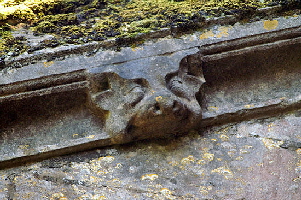 |
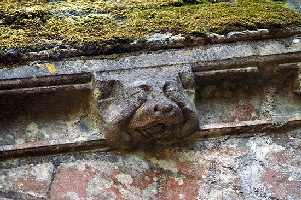 |
 |
|||||||||||||||||||||||||||||||||||||||||||||||||||||||||||||||||
|
Three more pig carvings from Heckington’s friezes. Note in each case the very deeply carved and quite life-like ears. Note particularly, however, those familiar but blind but well-carved eyes. |
|||||||||||||||||||||||||||||||||||||||||||||||||||||||||||||||||||
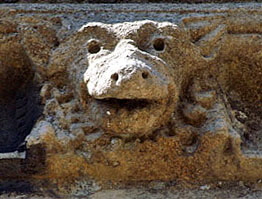 |
|||||||||||||||||||||||||||||||||||||||||||||||||||||||||||||||||||
 |
|||||||||||||||||||||||||||||||||||||||||||||||||||||||||||||||||||
|
Grotesque carvings at (left) Exton chancel and (right) Heckington south aisle. |
|||||||||||||||||||||||||||||||||||||||||||||||||||||||||||||||||||
|
Sleaford |
|||||||||||||||||||||||||||||||||||||||||||||||||||||||||||||||||||
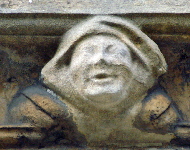 |
|||||||||||||||||||||||||||||||||||||||||||||||||||||||||||||||||||
 |
|||||||||||||||||||||||||||||||||||||||||||||||||||||||||||||||||||
 |
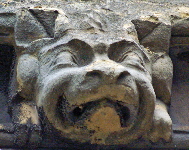 |
||||||||||||||||||||||||||||||||||||||||||||||||||||||||||||||||||
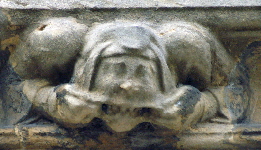 |
|||||||||||||||||||||||||||||||||||||||||||||||||||||||||||||||||||
 |
|||||||||||||||||||||||||||||||||||||||||||||||||||||||||||||||||||
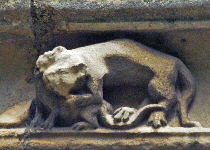 |
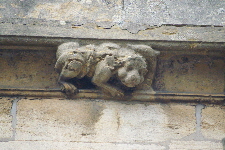 |
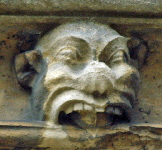 |
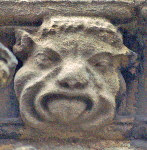 |
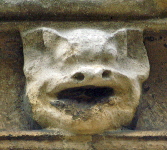 |
|||||||||||||||||||||||||||||||||||||||||||||||||||||||||||||||
 |
|||||||||||||||||||||||||||||||||||||||||||||||||||||||||||||||||||
 |
|||||||||||||||||||||||||||||||||||||||||||||||||||||||||||||||||||
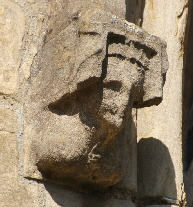 |
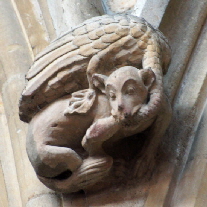 |
||||||||||||||||||||||||||||||||||||||||||||||||||||||||||||||||||
 |
|||||||||||||||||||||||||||||||||||||||||||||||||||||||||||||||||||
|
If John Oakham were the sculptor here then it would the John Oakham that worked at Brant Broughton rather than the one we saw producing a much less interesting palette of designs when he worked within the MMG. There is no sign of the repetitious cow-lion designs we saw there. In the Sleaford Cluster churches the pig is the recurring theme. They sport the exaggerated ears and the well-formed eyes that did mark out those cow-lions and we have already seen that John carved cow faces at both Boston and Swineshead. The “feel” of these friezes seems right for John Oakham. but that is a very subjective thing. A goffered caul headdress appears on a label stop. There are none at Heckington. As at Heckington - and indeed Brant Broughton and Boston - this is a highly decorated church for which the friezes are almost the incidental music to the main event. It is hard to know whether of thoselarger carvings were attributable to John although later we will be examining a few common themes that might give us a clue. There are some very fine and entertaining internal carvings on corbels and spandrels. Again, attribution is elusive, but the image (above right) is somewhat in the John Oakham style. |
|||||||||||||||||||||||||||||||||||||||||||||||||||||||||||||||||||
|
Anwick |
|||||||||||||||||||||||||||||||||||||||||||||||||||||||||||||||||||
|
We have already seen ample evidence that peripatetic as the masons were - and as John Oakham was in particular - their work is often seen in geographical “clusters”. Oakham in Rutland is one with Exton, Whissendine, Cottesmore, Cold Overton and Langham very close indeed within the MMG. Harlaxton, Denton and Mustom form another. Whether this was the result of masons touting for next job even as they worked on another or whether it was opportunism and envy on the parts of those other local churches we cannot know. What we can say with some certainly is that working within tight geographical areas had huge advantages for the masons. Supplies of stone and other raw materials would be assured. More to the point, the team of masons would be much easier to keep together because most masons would no want to venture too far from their home villages . If you were a contracting mason the last thing you would want to be doing is to be recruiting a new team at each site. The churches would enjoy much the same benefits. They would know that they were dealing with an experienced and reliable contractor who could start as soon as his last job was finished. Indeed, as I have previously said, I believe a team of masons would be working on the next church even as some of the team were doing the finishing work at the first. There is no reason to suppose that the economic imperatives of the fifteenth century contractor-mason were any different from those of Persimmon Homes or AN Builder in the twenty first. Sleaford is six miles from Heckington and Anwick, my new focus of attention, is about six miles from each. Next up we will be looking at Ewerby and these four churches form another nice little cluster. Anwick is a village. Its church could not compete financially with the commercial importance of Sleaford and Boston, nor with the rich endowment of Heckington. Its decoration is not nearly as comprehensive but arguably it is very rich for such a small settlement and it seems that they were able to afford to employ all or part of the same group of masons. The frieze here is only on the west tower. So too the pinnacle and buttress carvings. The rest of the church is military in its lack of decoration. The tower itself has a large broach spire so water drainage was not an issue. One cannot help but wonder why the frieze was thought necessary. |
|||||||||||||||||||||||||||||||||||||||||||||||||||||||||||||||||||
 |
|||||||||||||||||||||||||||||||||||||||||||||||||||||||||||||||||||
 |
|||||||||||||||||||||||||||||||||||||||||||||||||||||||||||||||||||
 |
|||||||||||||||||||||||||||||||||||||||||||||||||||||||||||||||||||
 |
|||||||||||||||||||||||||||||||||||||||||||||||||||||||||||||||||||
 |
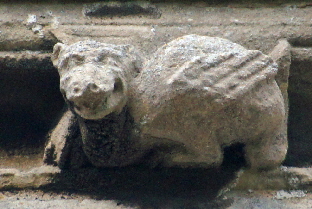 |
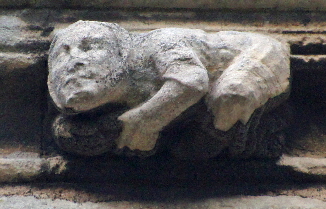 |
|||||||||||||||||||||||||||||||||||||||||||||||||||||||||||||||||
|
Anwick’s carvings are most reminiscent of those at Sleaford. We have a pig in what is emerging as a charcteristic style. At both Anwick and at Sleaford a man peers over the cornice holding his mouth open with both hands, teeth bared. |
|||||||||||||||||||||||||||||||||||||||||||||||||||||||||||||||||||
|
Ewerby |
|||||||||||||||||||||||||||||||||||||||||||||||||||||||||||||||||||
|
Like Anwick, Ewerby is not a large settlement and also has all of its sculpture on its tower which, like that at Anwick is broached. |
|||||||||||||||||||||||||||||||||||||||||||||||||||||||||||||||||||
 |
 |
||||||||||||||||||||||||||||||||||||||||||||||||||||||||||||||||||
 |
|||||||||||||||||||||||||||||||||||||||||||||||||||||||||||||||||||
 |
|||||||||||||||||||||||||||||||||||||||||||||||||||||||||||||||||||
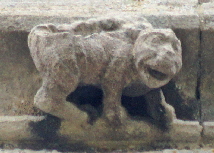 |
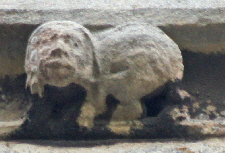 |
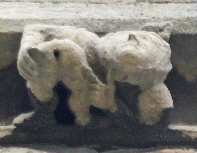 |
|||||||||||||||||||||||||||||||||||||||||||||||||||||||||||||||||
|
One might make a case for Ewerby as having more rude carving per metre than any other frieze. Admittedly that judgement depends upon the notion that those gentlemen straining away with their hands on their knees are doing something not normally done in view of polite society. There is a blatant bum-scratcher. There is another figure (above right) pointing to his own or someone else’s bottom. There is no pig carving here, Its place within this cluster has to rest on look and feel and its geographical proximity to the other churches. |
|
Pushing the Boat Out - The Jonah Scukptures |
|
All of the churches on this page have carvings on pinnacles and buttresses. None of the MMG churches feature this. You may have noticed too that I have said little on this page about gargoyles. That is because there are no obvious distinguishing features such as were displayed in the Gargoyle Master’s oeuvre. In truth - and I will discuss this further - the work at these churches does not seem to have been prompted by the same motivation as within the MMG. Ewerby and Anwick have broach spires with no apparent need for gargoyles and no obvious motivation for decorating the sub-parapet cornice. Their aisles and clerestories are totally plain. It is, of course, perfectly plausible that those churches were simply less prepared or less able to spend on sculptural fripperies such as we often (but not always) see within the MMG. Heckington and Sleaford, on the other hand, seemed to want to cover every surface with sculpture presumably just because they could. The churches outside the MMG, to cut a long story short, did not seem to have a consistent agenda. We must surmise that neither was this work carried out by such a focused team of masons. I rather suspect that John and one or two accomplices were working in a more freelance way, picking up what work they could. This makes proving the cluster so much more difficult because we can see no mooners nor fleas at these churches. Pig carvings help a great deal - and bear in mind they were also featured at Swineshead and Boston - but Ewerby lacks even those. So for supporting evidence I am going to turn to,,,boats. You don’t expect to see boats carved on the outsides of churches. One might say it would be bonkers to try. So look at the next set of pictures. |
|
|
||||||||||||||||||||||||||||||||
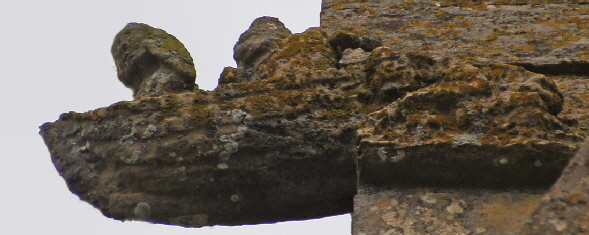 |
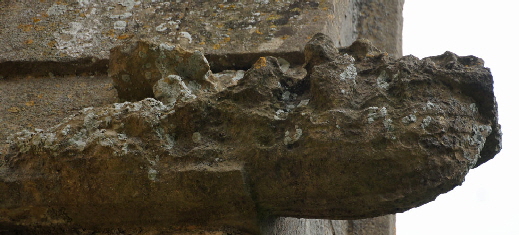 |
|
|
|
||||||||||||||||||||||||||||||||||||||||||||||||||||||||
|
So we have another cluster of very idiosyncratic sculptures, none of the locations very far apart. Ewerby, Anwick and Heckington are three of the four churches in the Sleaford Cluster. Then we see that Welbourn has a boat carving. In a previous chapter I discussed the strong probability that John Oakham was responsible for the fine pinnacle and buttress carvings there. Now we have two now churches to throw into the mix: Donington which is very close to the John Oakham church at Swineshead and only eleven miles south east of Heckington, and the very large town church of Newark-on-Trent. What do these images mean? The key is probably seen clearly in the scenes at Ewerby, Newark and Anwick. In all three of these there is clearly a man outside the boat - probably also in the badly weathered example at Welbourn. Heckington’s, it must be said, seems different from the others and has only one occupant. In the Old Testament Book of Jonah, Jonah is told by God to go Nineveh and prophesy against it for its great wickedness. Jonah, however, tries to run away and boards a boat at Jaffa, a huge storm comes up and the sailors conclude that Jonah is to blame. He tells the sailors that if they throw him overboard the storm will abate. After initially refusing, the sailors do as he bids, throw him overboard and the storm ceases. A whale swallows Jonah. He spends three days in the whale’s body, repents to God who obliges by making the whale vomit Jonah out. Amongst all of the unfathomable |
|
Mapping these boat carvings is very interesting. If you draw a line from Newark to Heckington (roughly, again, along the A17 road) all of these five churches lie within a stone’s throw of that line. It seems eminently possible that what we are seeing is a trademark carving of another group of masons comparable to the MMG or else of a single peripatetic decorative mason - or of both together. Brant Broughton is also plumb along that A17 line. It has no boat carving. Do we assume that John Oakham had a part on all this cluster of churches but simply omitted the boat carving at Brant Broughton? I think that would be a case of making the facts fit the theory. There is much within the Sleaford Cluster that is reminiscent of John Oakham’s style but I have to conclude that there is no hard evidence to support his presence at those churches. The thing that really disassociates this Sleaford Cluster from the MMG is lead roofing. Here are the bald facts : Every single church with sculpture by the MMG or by John Oakham (with or without Simon Cottesmore) has a lead roof with the exception of the chancel at Knossington. On the four churches of the Sleaford Cluster, however, the leading is patchy. Heckington has none. Ewerby and Anwick both lave leaded aisles but not clerestories. Sleaford is leaded except for its chancel. The team or individuals responsible for the carving do not seem to have had the leading of roofs amongst their stock in trade and it is not clear what else they did besides sculptural carving. The parapets are also variable. Anwick and Eweby have none, Heckington’s are plain apart from on the chancel where they are ornate. Sleaford’s are very fine indeed. There seems to be no single “proposition” that this team was making to the parishes. |
||||
|
Summary |
||||
|
What was the Mooning Men Group? When we look at that unifying icon of the mooning man carving what is it really telling us? I identified at least five masons whose work was visible at multiple sites as well observing subsets of sculpture that seemingly belonged to none of those five. Those five and their other colleagues, however, certainly worked within some sort of “corporate” structure. Probably that organisation was defined by a man or men who contracted to do the building work and if so almost certainly that man or men were not personally the sculptors. Then we identified the “flea” subset within the MMG and then found the same trademark at Swineshead, Brant Broughton and Harlaxton and managed, I think, pretty definitively to connect it to the man I call John Oakham. Just how it is connected is rather less obvious. When we look at Denton and Harlaxton, barely a couple of miles apart, we see the certain presence of John carving flush gargoyles. But we also see two tower friezes that seem certain not to have been carved by the same man and neither of which looks like the sort of friezes that John certainly carved at Oakham and Brant Broughton. In fact at Harlaxton it looks rather like two masons were carving the same frieze! Denton has no flea carving and when we look at Muston where John announced his presence by carving a font, again there is no flea. In other words, where we see a flea we see John Oakham. But where we see John Oakham we do not necessarily see a flea! John must have used that trademark only in certain circumstances. Within the MMG I suggested that it almost certainly implies the presence of both John Oakham and Simon Cottesmore at the same site. Outside the MMG I believe inference stands up at both Swineshead and Harlaxton. But there is no sign of Simon at Brant Broughton. Depending upon your level of scepticism it can either mean that the John & Simon link is a delusion or it can mean (as I believe it does) that the lack of sculptural work by Simon does not mean that he was not employed at Brant in some other capacity. I believe, in fact, that he did not carve there because his skills simply were not good enough for a church where the patrons were seemingly only to be satisfied by the best. For all we know, Simon may have been setting window tracery - a very highly skilled job; or he might have just been working as a hewer of stone. When we look at the Sleaford Cluster, then, we suffer much the same frustrations. The geographical proximity of these churches tells you that “something was going on” but it is fiendishly difficult to tie down the what and who. The pig carvings cannot be coincidence: the style is consistent and unmistakable. Sleaford, Heckington and Anwick all shared at least one mason-sculptor. There is no pig at Ewerby yet the quality of the carving allows us to strongly suspect that the same man was responsible. And then we have the boat carving that seems to link all five and Newark-on-Trent besides! Are these churches linked by a sculptor? Yes, I think they must be. Was that man John Oakham? I think the answer is probably not. The most damning argument is that the carving is found largely on church fabric that looks Decorated in style rather than Perpendicular. We can, in other words find him more or less at both ends of the A17 road but only at Swineshead in the intervening thirty miles. Yet halfway along that road, centred on Sleaford, we find a cluster of decorated churches that seem to have at least one mason in common. There are three plausible explanations. One is that they were not contemporary with John or the MMG. Another is that John found himself “shut out” of those churches by an equally skilled mason-carver. The third, of course, is that John Oakham was the at least one of a team of sculptors. We cannot rule out that last possibility completely. The most important breakthrough in examining the work of the MMG was to understand that the friezes and gargoyles were related to the expansion of those churches not to their original buildings. The association with that and of re-roofing gave a compelling and coherent narrative. That is a long way, however, from believing that all fifteenth century carving was occasioned by such an opportunity. It could be that the provision of parapets and cornices was a separate and later exercise from the structural changes. |
||||
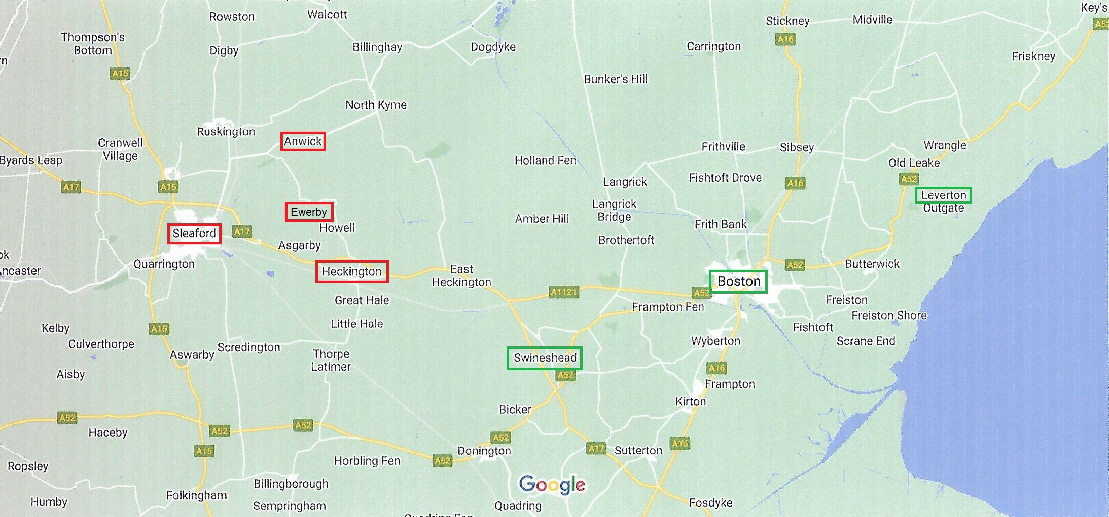 |
 |
|||||
|
Recommended Next Section - What does it all Mean? |
|||||
|
Church Building in the Post-Plague Era The Peregrinations of John Oakham The Sleaford Cluster (You are Here!) |
|||||

